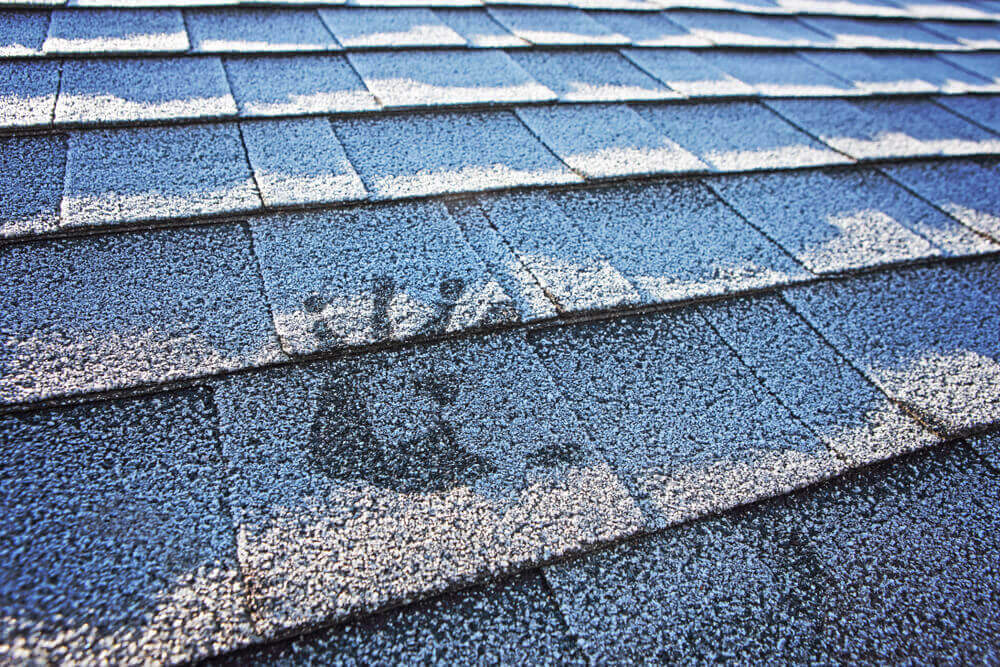
When your roof sustains damage or reaches the end of its lifespan, waiting until spring to replace it may not always be an option. In fact, winter roof replacements are not only possible but often necessary to protect your home from further damage. While cold temperatures present unique challenges, modern materials and techniques have made winter roof replacement a viable solution. So, can you replace your roof in the winter? Let’s explore what you need to know.
The Challenges of Winter Roof Replacements
Cold Weather Complications
One of the biggest concerns homeowners have is whether the cold will interfere with roof installation. Indeed, temperatures below freezing can affect how certain materials, especially asphalt shingles, adhere to your roof. Shingles can become brittle, making them more prone to cracking during installation. The adhesive strip on the underside of shingles, which seals them to the roof, may take longer to activate in the cold. However, this doesn’t mean you can’t replace your roof in the winter—it just requires experienced contractors who understand how to handle materials in colder climates.
Shorter Days, Longer Installations
Another issue that comes with winter roof replacement is the shorter amount of daylight. In the winter months, contractors have fewer hours of sunlight to work with, meaning that installations may take a bit longer. However, roofing teams often plan accordingly, breaking projects into manageable chunks and adjusting schedules to maximize daylight hours. This ensures that the project is completed efficiently without sacrificing quality.
Benefits of Replacing Your Roof in the Winter
Faster Scheduling and Availability
One of the significant advantages of scheduling a roof replacement in the winter is contractor availability. Since fewer people opt to have their roofs replaced during this season, roofing companies often have more flexibility in their scheduling. This can mean you’re able to get your roof replaced sooner than if you waited until the busy spring or summer months. This can be crucial if your roof has damage that could worsen if left unaddressed.
Preventing Further Damage
If your roof is leaking, has missing shingles, or is structurally compromised, waiting for warmer weather could lead to serious problems like water damage, mold, and even structural issues in your home. Replacing your roof in the winter can help you avoid these additional repairs, saving you money in the long run.
How Winter Roof Replacement Works
Material Considerations
To replace your roof in the winter, contractors often opt for materials that perform better in cold conditions. Asphalt shingles are still the most commonly used material, but contractors take extra care to ensure proper installation. For example, roofing nails are often used in greater quantities to ensure shingles stay in place until the adhesive seals. Additionally, synthetic underlayment is a popular choice for winter roof installations because it doesn’t absorb moisture and is less likely to tear in the cold.
Special Techniques for Cold Weather
Professional roofers are equipped with techniques to ensure your roof replacement is successful even in low temperatures. Using hand warmers or heaters to keep materials at the right temperature before installation, or waiting for warmer parts of the day to work on sealing, are common practices. Contractors might also use cold-weather adhesives to ensure proper bonding even when it’s chilly.
Is Winter Roof Replacement Right for You?
Assess the Urgency
The decision to replace your roof in the winter depends largely on the condition of your current roof. If you have leaks, missing shingles, or structural damage, waiting until spring could lead to costly interior damage. In these cases, replacing your roof in the winter is often the smarter choice.
Hire an Experienced Contractor
Not all roofing companies are experienced in winter roof replacements, so it’s important to hire a contractor with specific experience in cold-weather installations. They will know how to navigate the challenges of cold temperatures and ensure your new roof is installed correctly, protecting your home for years to come.
Conclusion
 So, can you replace your roof in the winter? Absolutely! While cold temperatures and shorter days present some challenges, experienced contractors can successfully install a new roof using the right techniques and materials. Winter roof replacement can even offer some benefits, such as faster scheduling and preventing further damage to your home. If your roof needs urgent attention, waiting for warmer weather might not be an option. Contact Advantage Construction today to discuss your winter roof replacement options.
So, can you replace your roof in the winter? Absolutely! While cold temperatures and shorter days present some challenges, experienced contractors can successfully install a new roof using the right techniques and materials. Winter roof replacement can even offer some benefits, such as faster scheduling and preventing further damage to your home. If your roof needs urgent attention, waiting for warmer weather might not be an option. Contact Advantage Construction today to discuss your winter roof replacement options.
